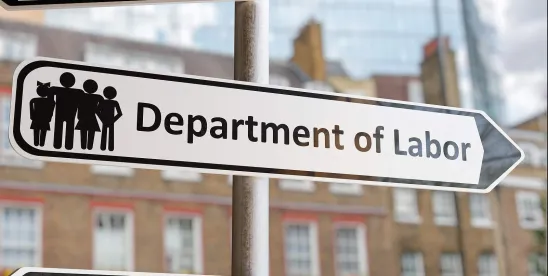The U.S. Department of Labor (DOL) has issued its Final Rule to increase the minimum salary requirements for the “white collar” exemptions (executive, administrative, and professional) from minimum wage and overtime pay requirements under the Fair Labor Standards Act (FLSA). The Final Rule sharply increases the minimum salary level for the white-collar exemption to apply. The increase will take effect in two stages over six months.
The standard salary level will increase in two phases from the current $684 per week ($35,568 per year) to:
- July 1, 2024: $844 per week ($43,888 annually)
- Jan. 1, 2025: $1,128 per week ($58,656 annually)
The highly compensated exemption (HCE) total annual compensation level will increase from its current $107,432 per year to:
- July 1, 2024: $132,964 per year
- Jan. 1, 2025: $151,164 per year
The salary thresholds will be updated every three years to reflect current earnings data, beginning July 1, 2027.
The Final Rule, announced on April 23, is slated to take effect July 1, 2024. Formal publication in the Federal Register is pending.
Changes From Proposed Rule
In its proposed rule, the DOL announced a new methodology for determining the standard salary level: 35th percentile of weekly earnings of full-time salaried workers in the lowest-wage Census Region (currently, the South) and 85th percentile of full-time salaried workers nationally for the HCE. At the time the proposed rule was issued, those figures amounted to a salary level of $1,059 per week ($55,068 per year) for the standard exemption and $143,988 per year for the HCE exemption. DOL warned the figures could be higher when it releases the Final Rule based on current data.
The proposed rule issued in September 2023 did not propose implementing changes in phases. But in the Final Rule, the DOL decided to implement the changes in two phases. The first phase, effective July 1, 2024, will use the existing methodology: 20th percentile of the lowest-wage Census Region (the South) for the standard exemption and the 80th percentile full-time salaried workers nationally for the HCE. The second phase, effective Jan. 1, 2025, will use the 35th and 85th percentiles, as DOL initially proposed. That is what accounts for the significant increases in the rates from July 1, 2024, to Jan. 1, 2025.
Another significant change from the proposed rule relates to application of the new salary levels to workers in the Commonwealth of the Northern Mariana Islands, Guam, Puerto Rico, and the U.S. Virgin Islands. The proposed rule expanded the application of the salary levels to these territories, but the Final Rule dropped these changes and leaves the current salary levels for these territories the same: $455 for these territories and $380 for American Samoa.
Automatic Updates
The Final Rule also implements automatic updates to the salary thresholds every three years. The DOL will determine the new salary threshold by applying then-current earnings data using the same methodology it used in setting the current increases.
That means the minimum salary requirements could increase on a routine basis without DOL undertaking notice-and-comment rulemaking. However, the rule provides that a scheduled automatic update could be delayed temporarily if warranted by unforeseen economic or other conditions.
Impact of Final Rule
According to DOL estimates, in the first year of the Final Rule taking effect, approximately four million workers will be impacted. (One million employees will be affected by the July update; the remaining three million workers will be impacted by the higher Jan. 1, 2025, salary floor.) The DOL estimates that 292,900 employees will be affected by the adjustment to the HCE salary threshold.
The DOL also projects an annualized income transfer from employers to employees of $1.5 billion.
DOL anticipates that the industry with the highest number of affected workers will be professional and business services (827,000), while the industry with the highest percentage of executive, administrative, and professional workers affected will be leisure and hospitality (about 24 percent). Private-sector nonprofit employees are more likely to be impacted (18.9 percent) than employees in private-sector for-profit entities (13.6 percent), according to DOL.
Prospects for Implementation; Severability
Whether the Final Rule will take effect July 1 remains to be seen. As with the white-collar rules issued under the Obama and Trump Administrations, legal challenges to the Biden white-collar rule are anticipated. Currently, in connection with the current salary threshold set under the Trump Administration, the DOL is defending the agency’s statutory authority to impose any salary requirement in defining the criteria for the white-collar exemption. In a Sept. 28, 2023, decision, a federal court in Texas held that the DOL permissibly adopted a salary minimum when it issued its 2019 rule, which set the $684 weekly salary level now in effect. That ruling is on appeal in the U.S. Court of Appeals for the Fifth Circuit. Mayfield v. U.S. Department of Labor, No. 23-50724.
Opponents of the latest Final Rule also may challenge the DOL’s authority to implement automatic updates to the minimum salary thresholds.
The latest Final Rule may be even more vulnerable to suit. The U.S. Supreme Court this term is deciding whether to limit or overturn the “Chevron” standard of deference to administrative agency rulemaking. Depending on the outcome of the pending decision in Loper Bright Enters. v. Raimondo and a related case, Relentless, Inc. v. Department of Commerce, the DOL’s Final Rule may be subjected to heightened judicial scrutiny. The significant impact on the economy may also trigger the “major questions” doctrine, with opponents of the rule arguing only Congress has the authority to implement such a significant change.
In the Final Rule, DOL expressly states each part of the rule is “severable,” which is a hedge in case a court finds one aspect of the Final Rule invalid. A court might, for example, find the Jan. 1, 2025, increase too high to withstand scrutiny, but find the July 1, 2024, increase reasonable, thus leaving the phase-one increase intact, even if the later increase is invalid. Similarly, if a court were to determine DOL has no authority to implement automatic increases every three years, the court could invalidate that portion of the Final Rule but keep the remainder intact.
What Should Employers Do?
It is possible a federal court will enjoin the DOL from enforcing the Final Rule while the legal challenges are pending. That leaves employers in a difficult position of preparing to comply while the rule’s prospects are unclear. Adding to the complexity is a looming presidential election. A turnover in administrations could bring a change of course by the DOL. Nevertheless, employers should put a strategy in place to effectuate changes by the July and January deadlines in the event the rule does go into effect.
For now, employers need to identify currently exempt employees who do not satisfy the new minimum salary threshold and devise a strategy for compliance. Employers that have exempt workers who earn more than $684 per week, but less than the new salary thresholds of the Final Rule (and who satisfy the duties requirements), can comply by increasing affected employees’ salaries to the minimum salary level so they maintain their exempt status. When adjusting salary levels, employers must consider the impact on other exempt employees who also may request an increase, as the gap between their salary and other salaried workers diminishes. Alternatively, employers can retain the employees’ current pay levels and reclassify the affected employees as nonexempt.
Employers have options to minimize the financial impact of reclassifying employees as nonexempt. These include reducing their rate of pay so that the outcome of any overtime hours worked will be cost-neutral, or adopting a fluctuating workweek method in states where its use is permitted. Employers also can limit newly nonexempt employees’ overtime hours.
Employers also must consider how the proposed rule interacts with the corresponding exemptions under the myriad of state laws. Some states do not have overtime laws; others incorporate the FLSA as it stands; others incorporate the FLSA’s overtime provisions with higher salary requirements; and others have their own exemptions and salary levels without reference to the FLSA.
Whether the Final Rule ultimately takes effect, it presents an opportunity for employers to review the exempt status of their workforce. Consider an audit of wage and hour practices to ensure compliance with the FLSA and the state laws of the jurisdictions where your business has operations.





 />i
/>i

